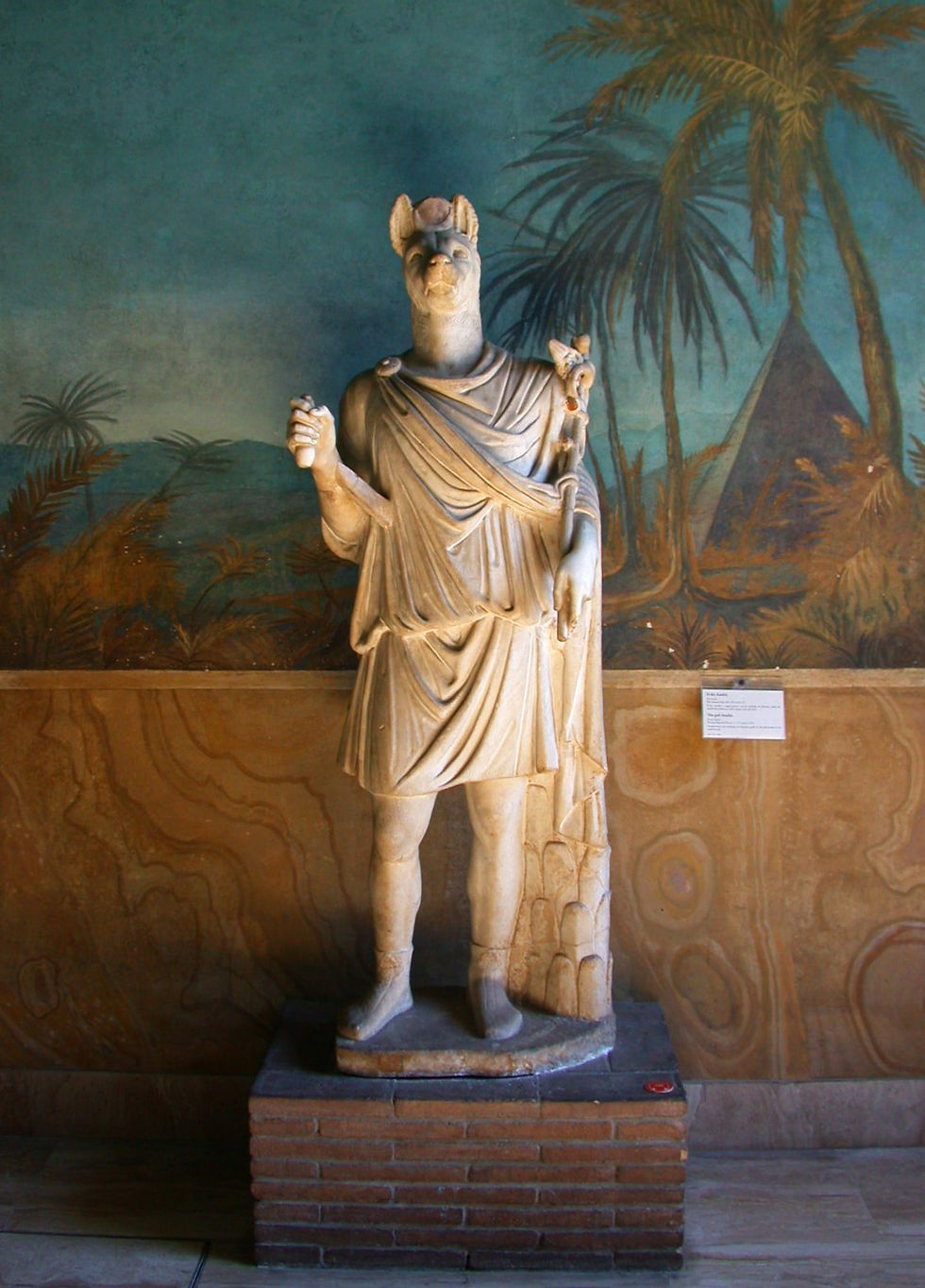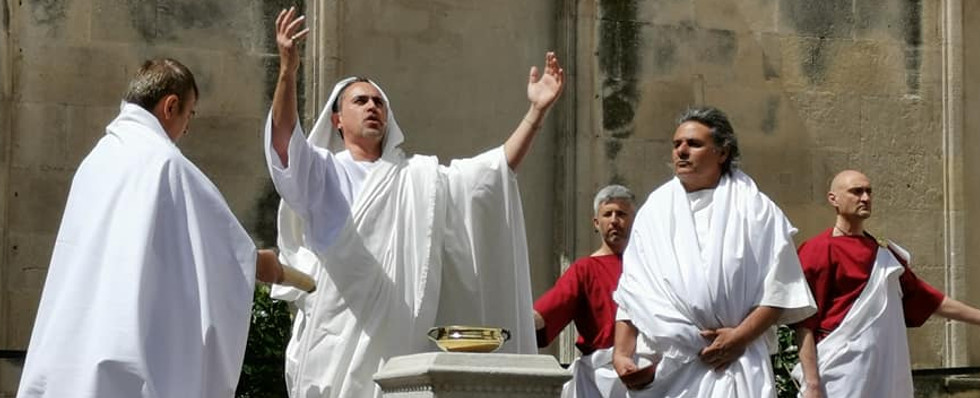Hermes Trismegistus and Hermanubis: the two faces of ancient syncretism
- associationenarro
- Oct 21
- 2 min read
The Hellenistic era (starting from the 3rd century BC) was a period of profound cultural fusion, particularly between Greece and Egypt. From this encounter arose a wealth of new divine and philosophical figures. Among them, Hermanubis and Hermes Trismegistus (Hermes Thrice Great) perfectly illustrate this dynamic, although their spheres of action are ultimately distinct.

Statue of Hermanubis, a Greco-Egyptian fusion of the gods Hermes (caduceus) and Anubis (jackal head). It embodies the psychopomp god who guides souls and symbolizes religious syncretism in the Roman era. Credits: Sailko / Wikimedia Commons (CC BY-SA 4.0 license).
Hermanubis : the guide of souls at the crossroads of cults
Hermanubis is the very embodiment of Egyptian-Greek religious syncretism. He was born from the union of the functions of Hermes (the Greek messenger and guide of souls) and Anubis (the Egyptian jackal-headed god, responsible for psychopomp role and embalming).
The role of the psychopomp : Hermanubis presided over the transition of souls between life and death. In the Greco-Roman world, he was worshipped as the guide who opened the gates of the afterlife, ensuring access to the mysteries of Isis and Serapis.
Iconography : He is represented as a human body wearing the jackal head of Anubis, but holding the caduceus of Hermes. His cult was particularly popular in the 2nd century AD in Rome and in Egyptian religious centers, where he symbolized the harmony of the two traditions in the face of death. He is a divine figure, the object of public worship.
Hermes Trismegistus: the master of secret philosophy
Hermes Trismegistus is not a deity of public worship, but a mythical figure of a sage and prophet. He is considered the founding father of the doctrine of Hermetism and the occult sciences.
The master of alchemy : The title Trismegistus (Thrice Great) refers to his excellence in three areas of knowledge: Alchemy, Astrology, and Theurgy (divine magic). To him is attributed the enigmatic Emerald Tablet, a pillar of medieval alchemical philosophy, and other fundamental texts of Hermetism (Corpus Hermeticum).
Link with Thoth : His figure results from the association of Hermes with the Egyptian god Thoth, god of writing, knowledge, and magic.
Domain : Unlike Hermanubis, who was a figure of cult for the dead, Hermes Trismegistus is a literary and philosophical figure. He embodies revealed, secret knowledge that inspired Western esotericism from late Antiquity through the Renaissance.
In summary, Hermanubis is the product of religious syncretism intended for the afterlife; Hermes Trismegistus is the source of philosophical and esoteric syncretism intended for the knowledge of the world and inner illumination.



Comments